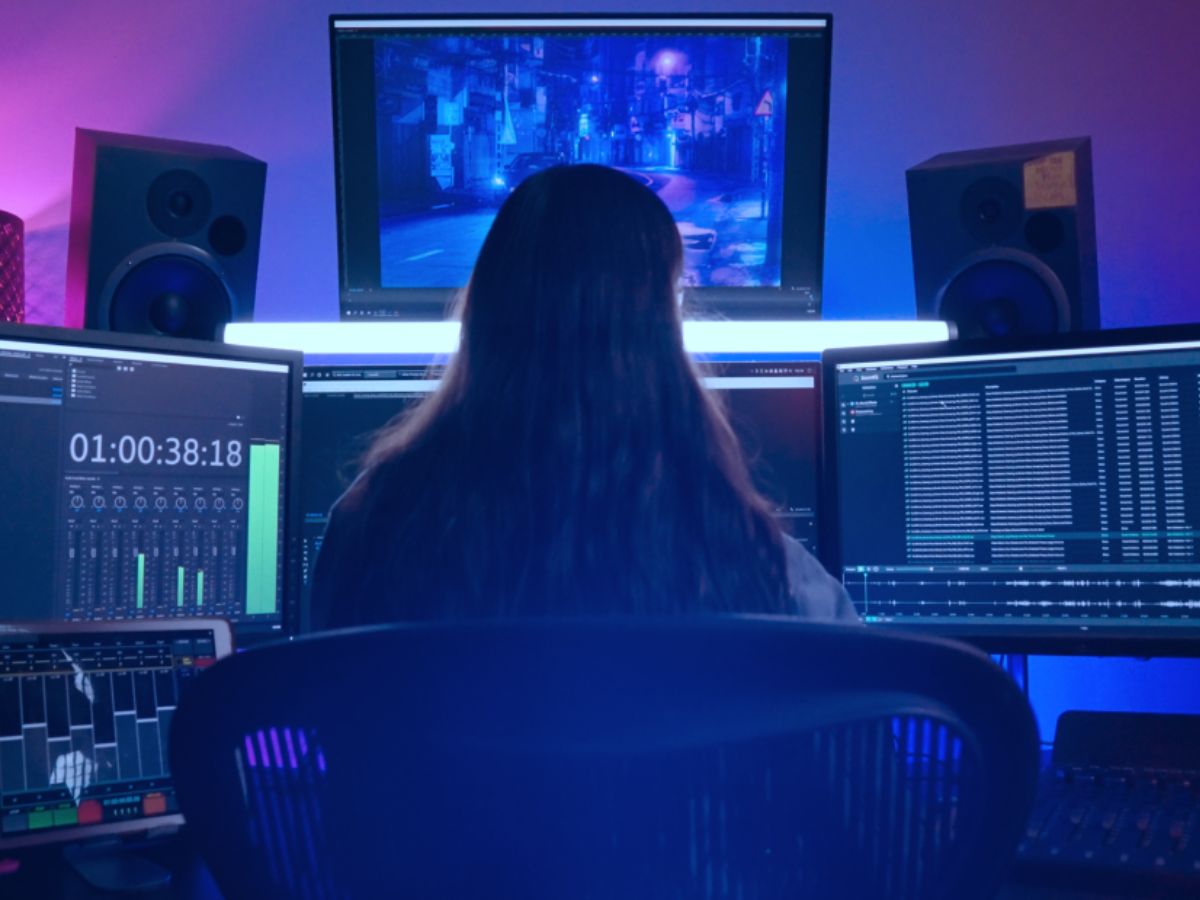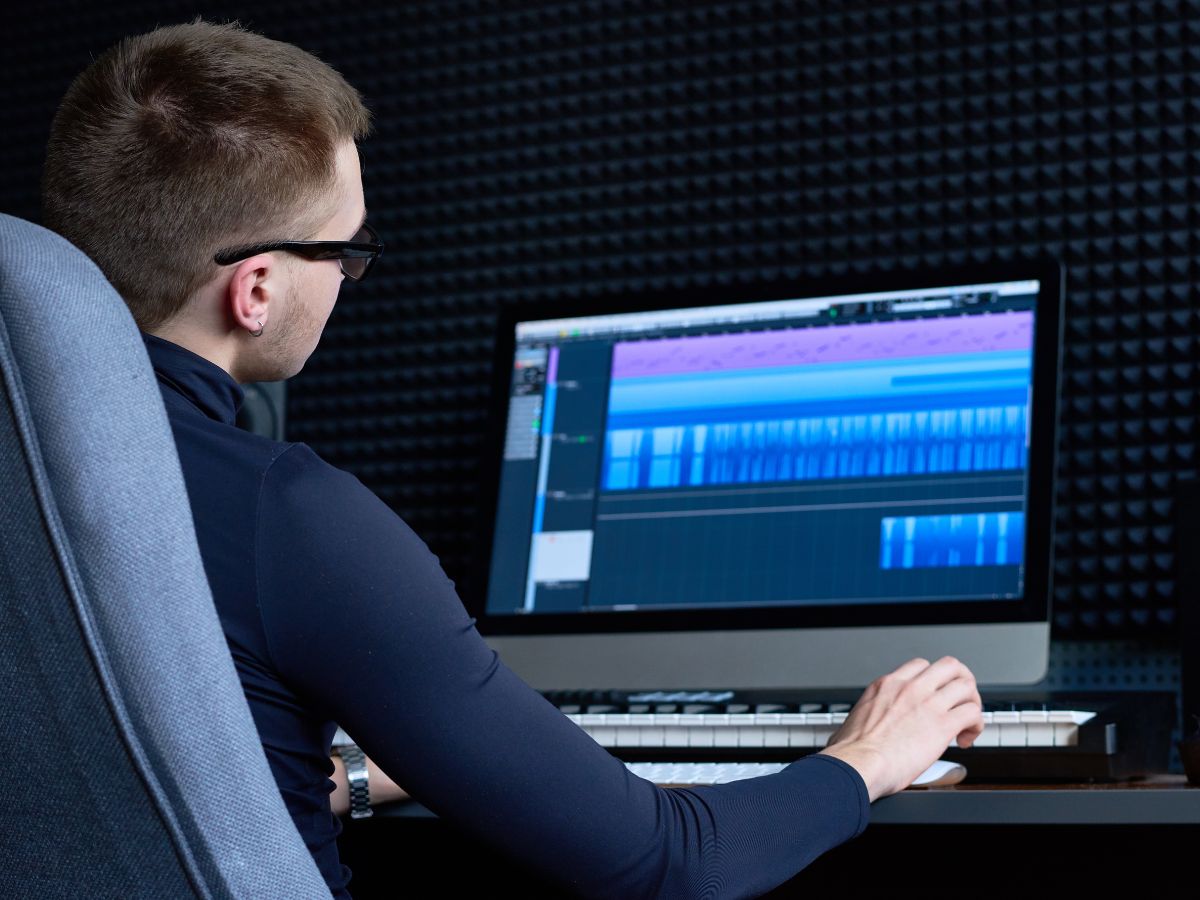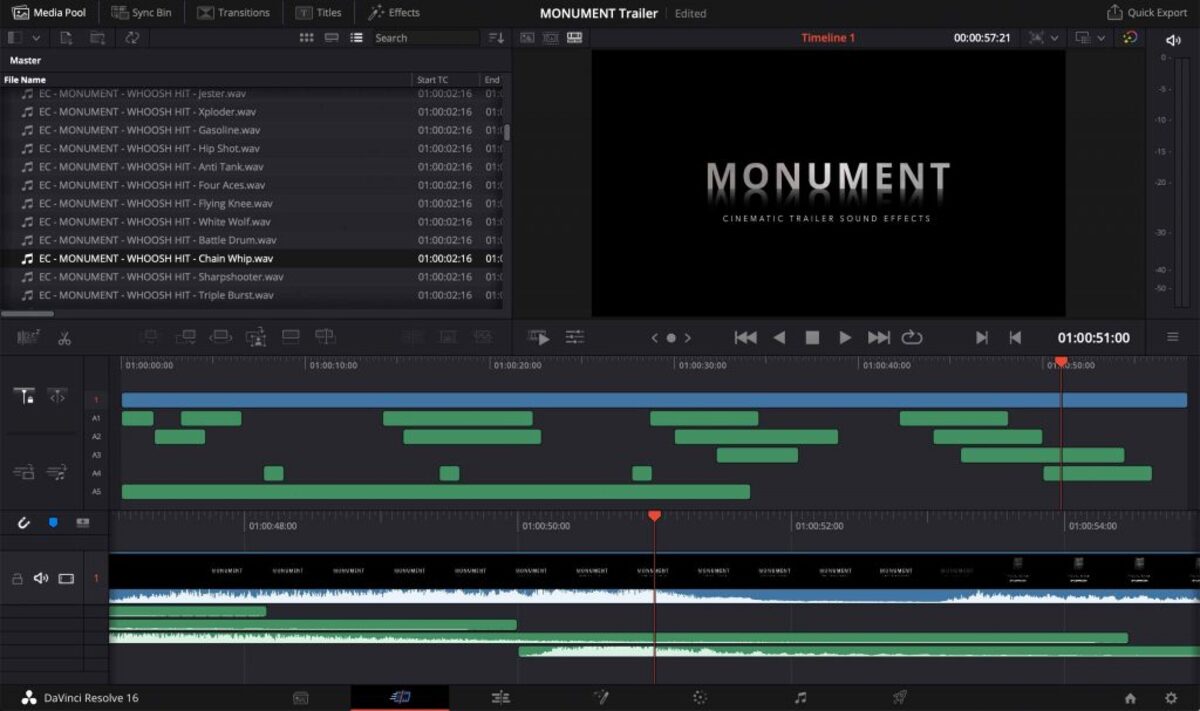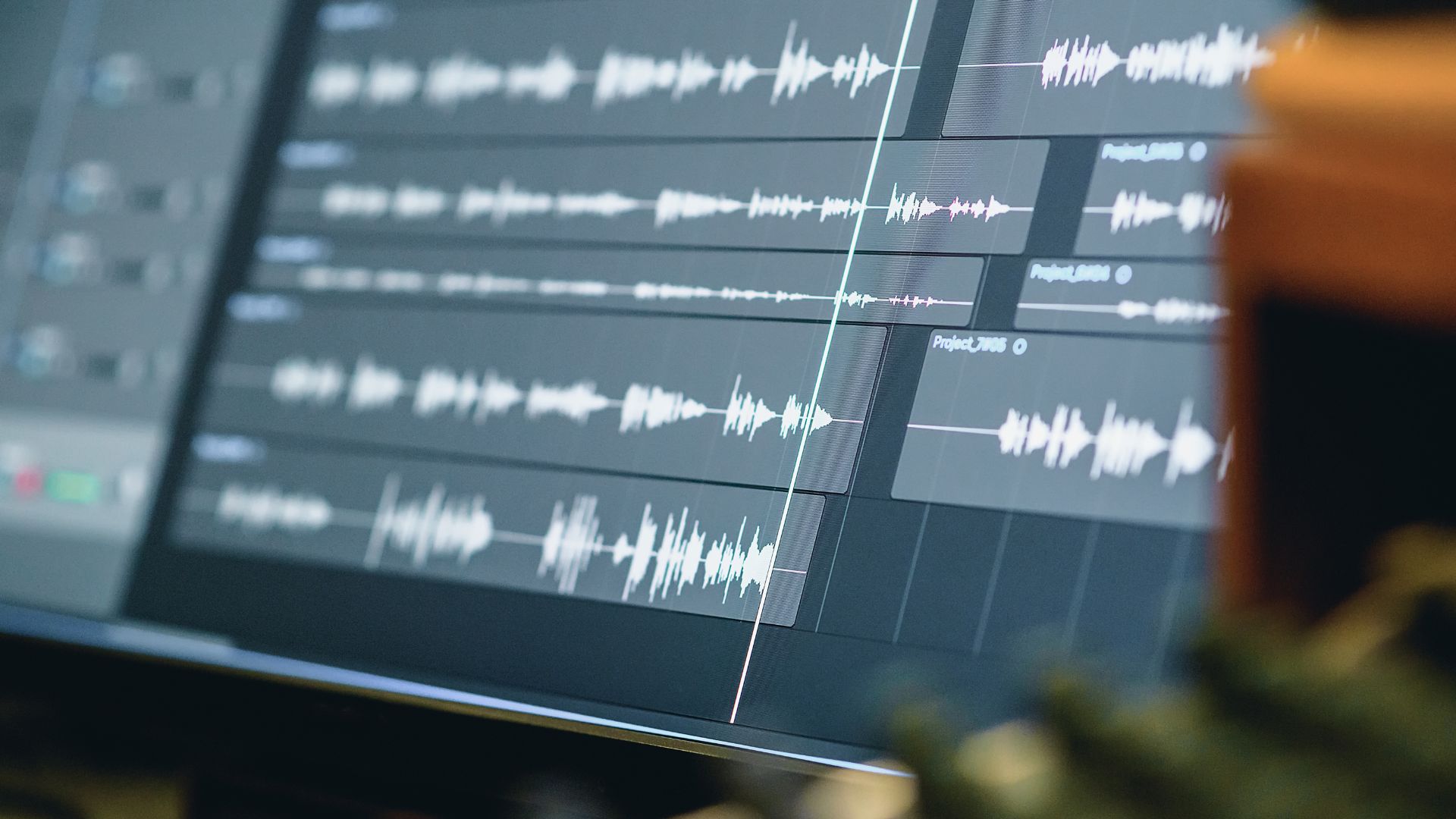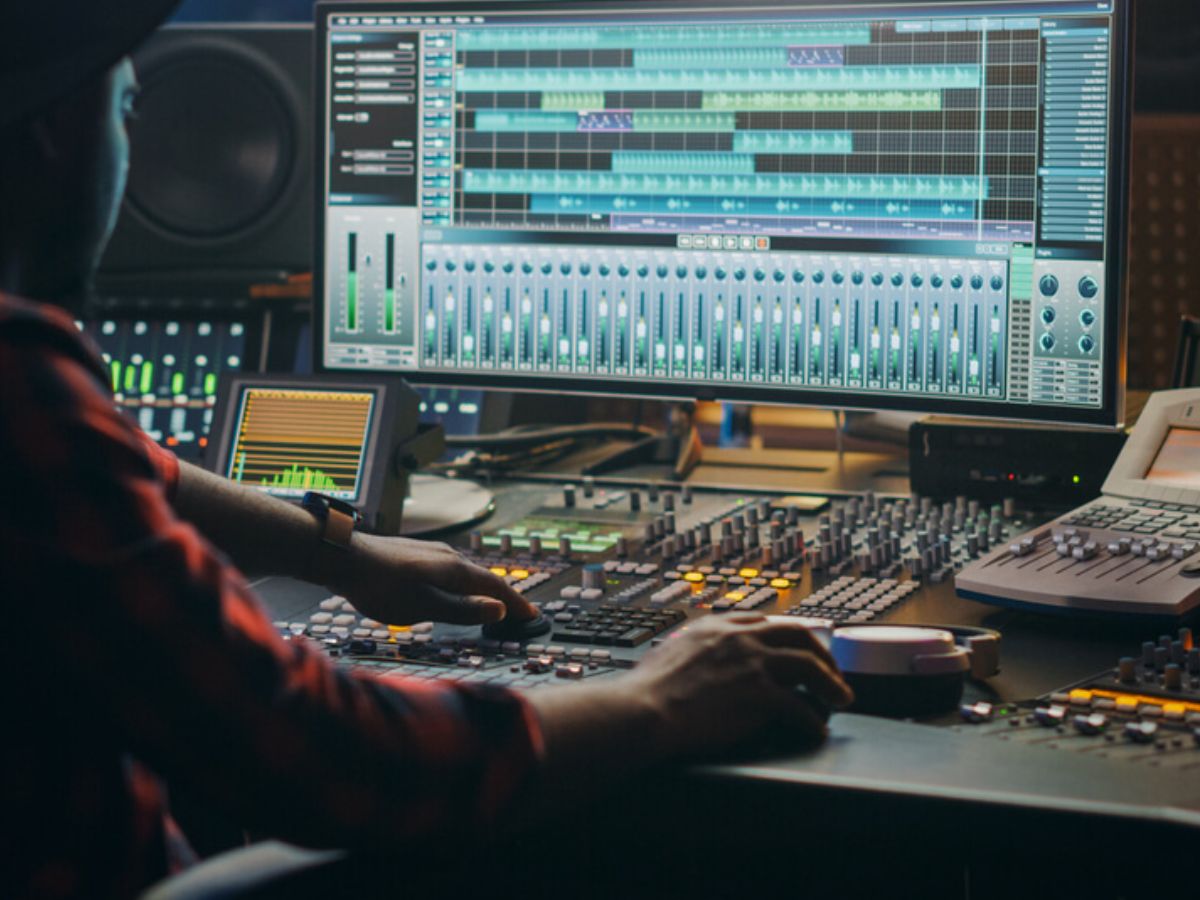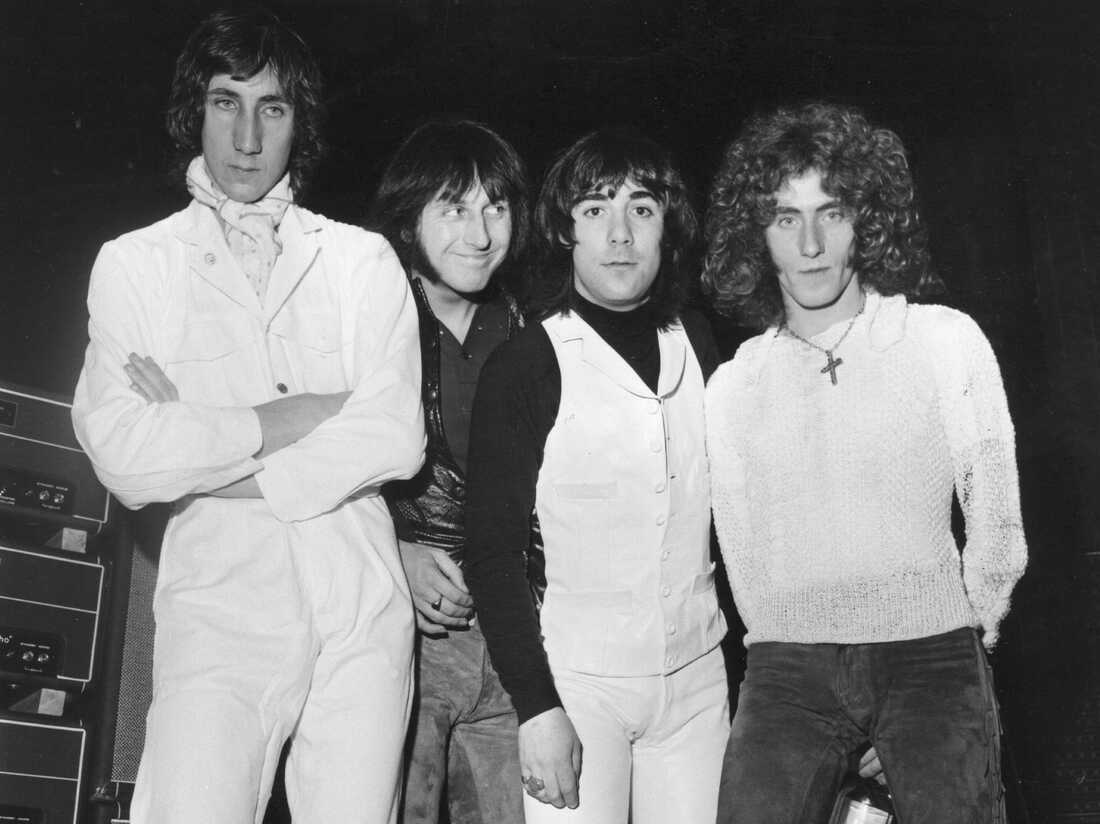Home>Production & Technology>Sound Effects>What Are Good Sound Effects To Have For Radio


Sound Effects
What Are Good Sound Effects To Have For Radio
Modified: January 22, 2024
Looking for good sound effects for your radio? Discover a wide range of high-quality sound effects to enhance your radio broadcast and captivate your audience.
(Many of the links in this article redirect to a specific reviewed product. Your purchase of these products through affiliate links helps to generate commission for AudioLover.com, at no extra cost. Learn more)
Table of Contents
Introduction
Sound effects play a crucial role in the world of radio broadcasting. They add depth, emotion, and atmosphere to radio programs, enhancing the listener’s experience and bringing stories to life. Whether it’s a dramatic segment, a comedy skit, or a suspenseful moment, sound effects can transport listeners to different locations, evoke emotions, and create a more engaging and immersive listening experience.
In this article, we’ll explore the background and importance of sound effects in radio, discuss the various types of sound effects commonly used, and provide tips for creating and using sound effects effectively in radio broadcasting.
Sound effects have been an integral part of radio since its early days. In the past, before the advent of visual media, radio was the primary source of entertainment and information for people all over the world. Sound effects were essential in painting vivid pictures in the minds of listeners, allowing them to imagine the scenes and actions described.
Today, with the availability of visuals through television and the internet, radio still remains a powerful medium that offers a unique and intimate connection with listeners. Sound effects continue to play a critical role in capturing and maintaining audience attention, helping to create a rich and immersive audio experience.
The use of sound effects in radio broadcasting is not limited to entertainment programs alone. They are also widely used in news reports, documentaries, commercials, and even in radio dramas and storytelling podcasts. Sound effects serve as powerful tools for conveying information, setting the tone, and engaging the listeners in an auditory journey.
Next, we will delve into the importance of sound effects in radio broadcasting and how they enhance the overall listening experience.
Background of Sound Effects in Radio
The use of sound effects in radio broadcasting dates back to the early days of the medium. In the early 1920s, when radio was still in its infancy, sound effects were created live in the studio using various props, objects, and even musical instruments. This live sound effects production added a sense of authenticity and visceral impact to radio programming.
As technology advanced, sound effects in radio evolved as well. In the 1930s and 1940s, mechanical sound effect devices such as wind machines, thunder sheets, and door slammers were introduced to create a wider range of realistic sound effects. These devices allowed radio stations to produce high-quality sound effects consistently and efficiently.
The advent of magnetic tape recording in the 1950s revolutionized the world of sound effects in radio broadcasting. Tape recorders made it possible to pre-record and store a vast library of sound effects, providing broadcasters with a wider range of options and greater flexibility in their programming.
In the late 20th century, with the transition from analog to digital technology, sound effects production in radio underwent another significant transformation. Digital audio editing software and computer-generated sound libraries made it easier than ever to create, edit, and manipulate sound effects. This opened up a world of possibilities for broadcasters, allowing them to create intricate and realistic soundscapes in their programs.
Today, sound effects in radio have become an integral part of the storytelling process. They are used not only to enhance the narrative but also to captivate listeners and create a sense of engagement. From the subtle background noises that create ambience to the explosive sound effects that bring action sequences to life, sound effects add depth, emotion, and atmosphere to radio programming.
With the rise of internet radio, podcasting, and digital platforms, the demand for high-quality sound effects has increased significantly. Independent podcasters, radio stations, and content creators are now able to access a vast array of sound effects libraries, both free and paid, to enhance their productions. This accessibility has democratized the use of sound effects, allowing even small-scale broadcasters to create professional-sounding audio content.
Next, let’s explore the importance of sound effects in radio broadcasting and how they contribute to the overall listening experience.
Importance of Sound Effects in Radio Broadcasting
Sound effects play a vital role in radio broadcasting as they have the power to engage listeners, paint vivid imagery, and evoke emotions. They enhance the overall listening experience, making radio programs more captivating, immersive, and memorable. Here are several reasons why sound effects are essential in radio broadcasting:
1. Creating Atmosphere: Sound effects help to establish the mood and atmosphere of a radio program. Whether it’s the chirping of birds in a peaceful countryside scene or the bustling sounds of a city street, the right sound effects create a sense of place and transport listeners into the world being portrayed.
2. Eliciting Emotions: Sound effects have a powerful impact on the emotional response of listeners. They can heighten tension, induce laughter, generate suspense, or evoke nostalgia. By using appropriate sound effects, radio broadcasters can effectively convey the intended emotions and connect with their audience on a deeper level.
3. Enhancing Storytelling: Sound effects serve as a storytelling tool, enriching the narrative and making it more immersive. They can emphasize key moments, highlight actions, and bring characters to life through auditory cues. Whether it’s the creaking of a door, the sound of footsteps approaching, or the roar of a crowd, sound effects help to create a multi-dimensional listening experience.
4. Captivating Attention: In an era of information overload, sound effects are essential in capturing and maintaining listeners’ attention. They act as attention-grabbing elements, piquing curiosity, and heightening engagement. Well-placed sound effects can make the difference between a listener tuning out or staying fully engaged with the program.
5. Adding Production Value: Sound effects contribute to the overall production value of radio programs. They create a sense of professionalism, making the broadcast sound polished and well-crafted. Even simple sound effects can elevate the quality of a production and give it a more professional and immersive feel.
6. Branding and Identification: Sound effects can be used to establish a unique sonic identity for a radio station or program. By consistently using specific sound effects, broadcasters can create a recognizable and memorable sonic signature. This helps in building brand recognition and fostering a sense of familiarity among listeners.
Overall, sound effects are crucial in radio broadcasting as they add depth, emotion, and atmosphere to programs. They have the power to transport listeners to different worlds, evoke strong emotional responses, and make radio programs more engaging and unforgettable.
Now, let’s explore the different types of sound effects commonly used in radio broadcasting.
Types of Sound Effects
Sound effects can be categorized into various types based on their purpose and the sounds they represent. Here are some of the most common types of sound effects used in radio broadcasting:
1. Ambient Sounds: Ambient sounds are background noises that help to create a sense of place or atmosphere. Examples include the sounds of nature, such as birds chirping or waves crashing on a beach, or urban ambience like traffic, sirens, or people chatting. These sound effects are used to establish the setting and enhance the realism of a scene.
2. Foley Sounds: Foley sound effects are created by recording everyday objects or actions that mimic specific sounds. Footsteps, door creaks, glass breaking, or the rustling of clothing are common examples of foley sounds. These sound effects add authenticity and detail to a scene, making it more realistic and immersive.
3. Impact Sounds: Impact sounds are used to simulate the collision or contact between objects. They include sounds like explosions, crashes, punches, or breaking glass. Impact sounds add excitement and intensity to action scenes and help to create a sense of impact and drama.
4. Transition Sounds: Transition sounds are used to signify a change or movement from one scene or segment to another. They include sounds like whooshes, swooshes, or stingers. Transition sounds are often utilized in radio advertisements, program intros, and segues, providing a smooth flow and enhancing the overall pacing of the broadcast.
5. Musical Sound Effects: Musical sound effects are sounds produced by musical instruments or synthesized electronically. They are used to enhance the mood and emotional impact of a scene or segment. Examples include musical stings, drum rolls, or crescendos. Musical sound effects can add tension, suspense, or excitement to radio programming.
6. Vocal Sound Effects: Vocal sound effects involve human voices used in a non-speech manner. They include sounds like laughter, crowd reactions, gasps, or screams. These sound effects contribute to the overall storytelling and emotional impact of a scene, helping to create a more dynamic listening experience.
7. Environmental Sounds: Environmental sounds refer to sounds specific to a particular environment or location. Examples include sounds like rain, wind, thunder, or the hum of machinery. Environmental sounds add depth and realism to a scene, helping listeners immerse themselves in the setting being depicted.
These are just a few examples of the wide range of sound effects used in radio broadcasting. The choice of sound effects depends on the specific needs of the program and the story being told.
Now, let’s explore some of the common sound effects that are frequently used in radio programming.
Common Sound Effects Used in Radio
In radio broadcasting, there are several sound effects that have become staples across various genres. These sound effects are often used to create atmosphere, provide impact, and enhance the storytelling experience. Here are some of the most common sound effects used in radio:
- Door Opening and Closing: The sound of a door opening or closing is frequently used to indicate a change in location or the entrance of a character. It helps to establish the setting and create a sense of movement.
- Phone Ringing: The sound of a phone ringing is a classic sound effect used in radio programs, particularly in dramas or comedies. It signals incoming communication and can add suspense or humor to a scene.
- Footsteps: Footsteps sound effects are used to indicate the presence or movement of characters. It can help set the pace of a scene and create a sense of space, whether it’s the soft tiptoe of a spy or the heavy stomping of a monster.
- Explosions: Explosions are often used in action-packed radio dramas or war-themed programs. They create a sense of excitement, danger, and impact. The sound of an explosion can range from a small firecracker to a massive detonation.
- Weather Sounds: Radio programs often use weather sound effects to set the scene and create a specific ambiance. Rain, thunder, wind, and even the sound of snowfall can transport the listener to different weather conditions and enhance the storytelling experience.
- Animal Sounds: Animal sound effects are used to create a sense of presence or to evoke specific emotions. The sound of a barking dog, a chirping bird, or a roaring lion can help set the mood and enrich the portrayal of a scene.
- Crashes and Collisions: Crashing and collision sound effects are frequently used in action sequences and car chases. They add a sense of intensity, danger, and impact to the scene, making it more thrilling for the listener.
- Laughter and Applause: Laughter and applause sound effects are commonly used in comedic and live audience-based radio programs. They help to create a sense of humor and evoke a response from the audience, even in the absence of a live studio audience.
- Crowd Sounds: Crowd sound effects are utilized to simulate the presence of a large gathering or an enthusiastic audience. They can add realism and energy to live events, performances, or sporting broadcasts.
These are just a few examples of the numerous sound effects used in radio broadcasting. Sound effects, when used appropriately, can elevate the storytelling and engage the listeners on a deeper level.
Next, let’s explore how sound effects are created for radio and provide tips on effectively using sound effects in radio broadcasting.
Creating Sound Effects for Radio
Creating sound effects for radio involves a combination of creativity, technical skill, and attention to detail. Sound effects can be produced using a variety of methods, ranging from traditional Foley techniques to digital sound libraries. Here are some common approaches to creating sound effects for radio:
Foley Artistry: Foley artistry is the process of creating sound effects by performing various actions and manipulating objects. This can include footsteps, door slams, or the rustling of clothing. Foley artists use props and perform actions that match the desired sound, capturing them with high-quality microphones for optimal clarity and authenticity.
Prop Manipulation: Sound effects can be produced by manipulating objects or props in creative ways. For example, a crumpled piece of paper can mimic the sound of fire or footsteps on gravel. Experimenting with different objects and techniques can yield unique and convincing sound effects.
Recording Real-World Sounds: Many sound effects can be captured by recording real-world sounds in the environment. This can include capturing the sound of animals, machinery, or natural elements like wind and water. Taking field recordings and using them in a radio program adds an extra level of authenticity and immersion.
Digital Sound Libraries: Digital sound libraries provide access to a vast collection of pre-recorded sound effects. These libraries contain a wide range of sounds, from everyday objects to specific environmental sounds. By browsing and selecting suitable sound effects from these libraries, broadcasters can save time and effort in the creation process.
Sound Design Software: Advanced sound design software allows for the creation and manipulation of sound effects digitally. With these tools, sound designers can generate and customize unique sounds by combining and altering various audio elements. This approach is particularly useful for creating complex or otherworldly sound effects.
When creating sound effects, it’s important to consider the desired impact and realism. Pay attention to the timing, volume, and placement of the effects to ensure they integrate seamlessly with the rest of the audio production. Also, be mindful of copyright restrictions when using sound effects from external sources.
Now, let’s move on to exploring some tips for effectively using sound effects in radio broadcasting.
Tips for Using Sound Effects in Radio Broadcasting
Effectively using sound effects in radio broadcasting can enhance the listener’s experience and bring your programs to life. Here are some tips to help you make the most of sound effects in your radio broadcasts:
1. Choose sound effects that support the story: Select sound effects that align with the narrative and enhance the storytelling. Consider the emotions, atmosphere, and locations portrayed in the program, and choose sound effects that complement and reinforce them.
2. Use sound effects sparingly: While sound effects can be powerful tools, it’s important not to overwhelm the audio with excessive or unnecessary effects. Use sound effects strategically, focusing on key moments or scenes where they can have the most impact.
3. Mix sound effects with the dialogue: Blend the sound effects seamlessly with the dialogue to create a natural and immersive audio experience. Ensure that the sound levels are balanced, allowing the dialogue to take center stage while still integrating the effects effectively.
4. Pay attention to timing and sync: Timing is crucial when using sound effects. Ensure that the effects are synchronized with the events and actions in the program. Well-timed sound effects can enhance comedic timing, create tension, or emphasize dramatic moments.
5. Experiment with layering: Layering multiple sound effects can add depth and richness to the audio. Combine different elements to create complex and realistic soundscapes. For example, layering footsteps, ambient noise, and background music can enrich a scene and make it more immersive.
6. Maintain high audio quality: Use high-quality sound effects and ensure they are properly recorded or sourced. Poorly recorded or low-quality sound effects can distract listeners and diminish the overall production value of your broadcast.
7. Customize and modify sound effects: Don’t be afraid to modify or customize sound effects to fit your specific needs. Manipulating pitch, speed, or adding effects like reverb can make the sound effects more unique and tailored to your program.
8. Test and listen through different playback systems: It’s essential to test the sound effects on various playback systems and devices to ensure they translate well across different platforms. What sounds good on your studio monitors may sound different on headphones or car speakers.
9. Maintain a sound effects library: Build and organize a library of sound effects that you commonly use or might need in the future. Having a well-curated library will save time and ensure consistent quality in your productions.
10. Practice subtlety: Sometimes, the most effective sound effects are the subtle ones that evoke a specific mood or emotion. Don’t be afraid to use silence or ambient noise to create tension or build anticipation.
By following these tips and using sound effects thoughtfully, you can enhance the impact and immersion of your radio broadcasts, creating a more engaging and memorable experience for your listeners.
Now, let’s wrap up the article.
Conclusion
Sound effects are a powerful and essential aspect of radio broadcasting. They bring depth, emotion, and atmosphere to radio programs, captivating listeners and enhancing the overall listening experience. From creating a sense of place and setting the mood to adding impact and immersing the audience in a story, sound effects play a crucial role in engaging and entertaining listeners.
In this article, we explored the background and history of sound effects in radio, highlighting their evolution from live production to digital editing. We discussed the importance of sound effects in radio broadcasting, emphasizing their ability to create atmosphere, elicit emotions, and enhance storytelling.
We also explored the various types of sound effects commonly used in radio, ranging from ambient sounds and Foley effects to impact sounds and transition effects. These diverse sound effects contribute to the overall richness and realism of radio programs.
Furthermore, we delved into the process of creating sound effects for radio, including Foley artistry, prop manipulation, and utilizing digital sound libraries. We discussed the importance of maintaining high audio quality and ensuring proper timing and synchronization of sound effects.
Lastly, we provided practical tips for using sound effects effectively in radio broadcasting, such as choosing sound effects that support the story, using them sparingly, and experimenting with layering and customization. We emphasized the need to balance sound effects with the dialogue and maintain a high standard of quality throughout the broadcast.
In conclusion, sound effects are an indispensable tool that adds depth, creativity, and engagement to radio programs. When utilized skillfully, sound effects can transport listeners to different worlds, evoke powerful emotions, and create a truly immersive and memorable listening experience.
So, whether you’re a radio broadcaster, a podcaster, or an audio storyteller, harness the power of sound effects to captivate your audience and elevate your radio broadcasts to new heights.



